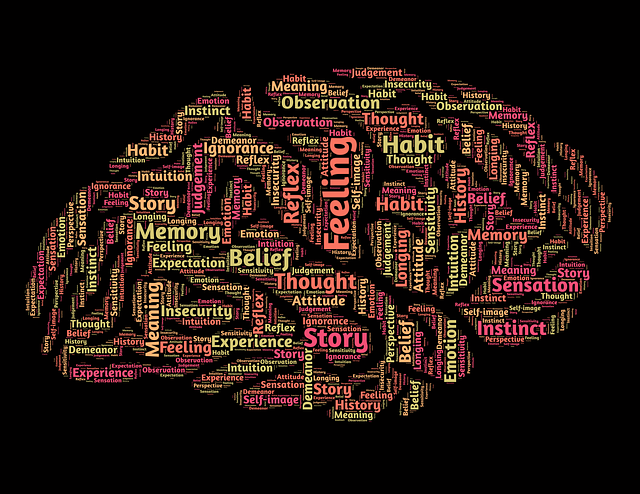Advertising has moved far beyond the days of relying solely on eye-catching visuals and memorable taglines. Today, it’s a sophisticated landscape that involves more than just aesthetics and clever words.
Understanding the human mind is now at the heart of creating successful advertising experiences. The psychology of user experience (UX) in advertising involves a deep exploration into the complexities of how people think, behave, and feel.
This understanding isn’t merely about selling a product or service; it’s about forging genuine connections between brands and consumers. By diving into the intricate workings of human behavior, cognition, and emotions, advertisers can tailor their strategies to resonate deeply with their target audience.
It’s no longer just about what looks good or sounds catchy; it’s about what evokes a response, triggers emotions, and ultimately influences decision-making.
Every element of an advertisement, from its design and layout to its messaging and storytelling, is crafted with the intention of tapping into the psyche of the consumer. Advertisers leverage psychological principles to guide user behavior, make an emotional impact, and establish a lasting impression.
Whether it’s creating a sense of urgency through limited-time offers or tapping into social proof to build trust, the aim is to create an experience that not only captures attention but also drives action.
Understanding the User’s Mind in Advertising

Understanding the user’s mind in advertising involves a multifaceted approach that integrates psychology, neuroscience, design, and cultural understanding.
By harnessing these insights, advertisers can create impactful experiences that not only capture attention but also resonate deeply, fostering enduring connections between brands and consumers.
#1. Cognitive Load and Simplified Design:
In a world bombarded with information, capturing attention becomes a strategic game. Advertisers leverage the concept of cognitive load, recognizing that users have limited mental capacity for processing information.
To counter this, UX designers meticulously craft designs that simplify the user journey. Intuitive layouts, clear and concise messaging, and strategic use of visuals work in harmony to reduce the mental effort required, making the interaction effortless and engaging.
#2. Emotional Engagement and Decision-Making:
Emotions play a profound role in decision-making. Advertisements that tap into emotions create a connection that goes beyond mere visuals or words.
Whether it’s eliciting joy, surprise, empathy, or any other emotion, ads that strike an emotional chord forge stronger and more memorable connections.
Positive emotional associations with an ad translate into favorable attitudes towards the brand, impacting consumer behavior and fostering long-term loyalty.
#3. Behavioral Economics in Influencing Behavior:
Behavioral economics principles are potent tools in influencing user behavior. Scarcity, social proof, and loss aversion are among the principles used strategically by advertisers.
Techniques such as creating a sense of urgency through limited-time offers, showcasing testimonials as social proof, and framing messages to emphasize potential losses rather than gains influence decision-making processes.
By understanding how these psychological triggers work, advertisers can nudge users towards desired actions.
#4. Attention and Focus:
Grabbing attention in a world filled with distractions is crucial. Understanding the limitations of human attention spans, advertisers employ various techniques to captivate audiences.
This includes using bold visuals, compelling storytelling, and interactive elements that not only capture attention but also maintain focus throughout the user journey.
#5. Neuroscience and Persuasion:
Delving into neuroscience aids in understanding how the brain responds to different stimuli.
Insights from neuroscience help in crafting persuasive content and experiences that resonate at a subconscious level, enhancing brand recall and influencing decision-making.
#6. Cultural and Societal Influences:
Advertisers must also consider cultural and societal factors that shape consumer perceptions and behaviors.
Tailoring ads to resonate with specific cultural nuances or addressing societal concerns can greatly impact how audiences relate to the brand.
Crafting Compelling UX in Advertising
Crafting a compelling user experience in advertising requires a strategic combination of personalization, usability, storytelling, interactivity, consistency, and a commitment to ongoing improvement based on user feedback.
By focusing on these aspects, advertisers can create impactful and memorable experiences that resonate with users, fostering stronger connections and driving desired actions.
#1. Personalization and User-Centric Approach:
Harnessing user data provides advertisers with invaluable insights into individual preferences and behaviors. By leveraging this data, advertisements can be tailored to deliver personalized experiences.
Customized content, product recommendations, and targeted messaging resonate more deeply with users, creating a sense of connection and relevance.
This personalized approach fosters stronger brand-consumer relationships and enhances engagement.
#2. Usability and Accessibility:
A seamless user experience is contingent upon usability and accessibility. Advertisers prioritize intuitive design and navigation, ensuring that users can effortlessly navigate through various touchpoints.
Responsive design across devices, consideration for diverse user abilities (including those with disabilities), and adherence to accessibility standards ensure inclusivity and enhance user satisfaction.
Ensuring that everyone, regardless of their capabilities, can access and interact with the advertisement is fundamental to creating a positive user experience.
#3. Storytelling and Brand Narratives:
Beyond showcasing product features, storytelling weaves a narrative that resonates with the audience on an emotional level. Brands that craft compelling narratives aligned with user values, aspirations, and experiences create a powerful connection.
These narratives humanize the brand, fostering empathy and understanding. By tapping into emotions and creating a meaningful storyline, advertisers not only capture attention but also establish a profound and lasting emotional bond with consumers.
#4. Interactivity and Engagement:
Encouraging active participation and engagement within advertisements enhances the overall user experience. Interactive elements such as quizzes, polls, or gamification not only captivate users’ attention but also immerse them in the brand experience.
This involvement leads to increased interaction, prolonged engagement, and better retention of brand messaging.
#5. Consistency and Brand Identity:
Maintaining consistency in branding elements across various platforms and touchpoints reinforces brand identity. A cohesive visual language, consistent messaging, and tone of voice contribute to brand recognition and trust.
Users are more likely to connect with and remember a brand that maintains a consistent image and message.
#6. Feedback and Iteration:
Incorporating user feedback and data-driven insights enables continual improvement. Advertisers analyze user behavior, gather feedback, and iterate on the advertisement’s elements to better align with user preferences and needs.
This iterative process ensures that the advertisement evolves in response to user interactions, enhancing its effectiveness over time.
Neuromarketing and the Future of UX in Advertising:

#1. Neuroscientific Advancements: The advancements in neuromarketing offer unprecedented insights into how the human brain responds to marketing stimuli.
By leveraging neuroscientific techniques such as EEG (electroencephalography) or fMRI (functional magnetic resonance imaging), advertisers gain a deeper understanding of consumers’ subconscious reactions to ads.
This understanding enables the creation of content and experiences that trigger specific neural responses, optimizing advertisements for maximum impact.
#2. Immersive Multisensory Experiences: The future of advertising involves embracing multisensory experiences that engage users on multiple levels. Integrating various sensory elements like visuals, audio, tactile feedback, and even olfactory cues creates immersive and memorable experiences.
This heightened sensory engagement not only captures attention but also enhances brand recall and emotional connections. Advertisers explore innovative ways to stimulate multiple senses, creating a more profound and lasting impact on consumers.
#3. Ethical Considerations and Responsibility: As advertisers gain deeper insights into human psychology, ethical considerations become paramount. The responsibility to ethically utilize this knowledge is crucial for building and maintaining trust with consumers.
Respecting user privacy, transparency in data usage, avoiding manipulative tactics, and focusing on genuine value creation are imperative. Advertisers must prioritize ethical practices to foster long-term brand trust and loyalty.
Striking a balance between leveraging neuromarketing insights and ethical conduct is vital for sustainable relationships with consumers.
#4. Adaptive and Predictive Technologies:
The future of UX in advertising involves the integration of adaptive technologies powered by AI and machine learning. These technologies analyze user behavior, preferences, and responses in real-time, enabling personalized and predictive advertising experiences.
Advertisers can dynamically adjust content based on user interactions, creating highly relevant and engaging ad experiences tailored to individual preferences.
#5. Emotional AI and Sentiment Analysis:
Advancements in emotional AI and sentiment analysis enable advertisers to gauge user emotions more accurately. By analyzing facial expressions, tone of voice, or text, advertisers can understand user sentiment towards ads.
This insight helps in fine-tuning content to resonate better with users’ emotional responses, fostering stronger connections and more impactful messaging.
#6. Collaborative and Immersive Technologies: Emerging technologies like augmented reality (AR) and virtual reality (VR) offer avenues for creating immersive and interactive advertising experiences.
Collaborative experiences where users engage with branded content in a shared virtual space or experience products through AR applications redefine user engagement, allowing for deeper exploration and interaction.
Conclusion:
The psychology of UX in advertising serves as a bridge between brands and consumers, transcending the traditional advertising paradigm. By understanding human behavior, emotions, and cognitive processes, advertisers can create compelling, ethical, and user-centric experiences.
The future of advertising lies not just in innovation and technology but in the empathetic understanding of the human mind, forging lasting connections that convert users into loyal customers.










